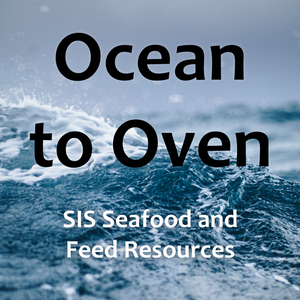Members
- ResearcherMartin Wiech
- Head of Research/ Research ManagerMarc Berntssen
- ResearcherSofie Remø
- ResearcherTore Strohmeier

| Period | 01. juni 2019 - 31. mai 2024 |
|---|---|
| Financed by | Norwegian Research Council (23 mill NOK) and the Norwegian Ministry of Trade, Industry and Fisheries (4,5 mill NOK) |
| Partner(s) | Research Institutes of Sweden (RISE), Hordafôr AS, Lerøy/Ocean Forest AS |
| Projects is lead by | Antony J. Prabhu Philip |
The use of low-trophic marine resources (like macroalgae, mussels and algae-eating fish) and other less harvested marine resources like mesopelagic organisms, either directly as food or as a feed ingredient in aquaculture, needs further development to become a larger contributor towards food production.
The main aim of the project is to assess nutritional quality and -safety of novel marine resources as well as assessing the sustainability and ecosystem effects of an increased production and harvest of these species. A profiling of nutrients and undesirable substances in these raw materials will be performed and we will asses the suitability and risks of these marine resources to be used as either food or feed. We will also perform a sustainability assessment of utilizing new marine resources from low trophic levels.
The project is structured through seven work packages (WP) with their respective work package leaders and the aim is to gain knowledge on the whole production chain of these novel marine resources, from ocean to oven.
Objective: Explore the nutrients and contaminants associated with marine low-trophic and mesopelagic resources (macroalgae, mussels, mesopelagic fish, polychaetas). Suitability for direct human consumption as well as for use in fish feeds will be evaluated in close collaboration with WP2, 3 and 4. (WP leader: Martin Wiech)
Objective: Undertake a feed and food safety assessment of potential hazards (identified in WP1) found in novel marine resources or raw materials derived from them. The guidelines for risk assessment for feed and animal health made by European Food Safety Authority’s (EFSA) will be used. (WP leader: Marc Berntssen)
Objective: The possibilities of using feed ingredients from organisms low in the marine trophic levels (e.g. macroalgae, blue mussel) and from mesopelagic fish in Atlantic salmon feeds will be explored. Nutritional qualities and -challenges with these less known ingredients must be better understood, they will therefore be assessed for their effects on growth and health of the fish. (WP leader: Sofie Remø)
Objective: The aim here is to evaluate the potential of novel marine resources to supply nutrients, and their potential risks as sources of undesirable substances (e.g. heavy metals, wax esters) when used for direct human consumption. Rodent models will be used to gain knowledge on this area. (WP leader: Lise Madsen)
Objective: Large-scale farming of low-trophic species can compromise the functioning of marine ecosystems by influencing the transfer of nutrients and energy in marine food chains, and consequently the biochemical and nutritional content of the product. Therefore, the biomass production of hypothetical low-trophic aquaculture scenarios will be modelled to study effects on coastal ecosystem ecology attributed to extraction of their trophic resources. (WP leader: Tore Strohmeier)
Objective: For aquaculture to grow in a sustainable way, finding new feed resources with a lower environmental footprint is pivotal. This might be achieved by sourcing feed ingredients from large-scale farming of low-trophic species (like mussels, seaweed) or from resources with large underutilized volumes (like mesopelagic fish). Through life cycle analysis, we aim to study the potential environmental impact of integrating such novel marine resources into Norwegian salmon farming. (WP leader: Erik-Jan Lock)
Objective: Dissemination of knowledge generated in the project to regulatory bodies, policy makers, industry and the general public for effective knowledge transfer and action through science. (WP leader: Antony Prabhu)
Published: 23.03.2020 Updated: 06.08.2021